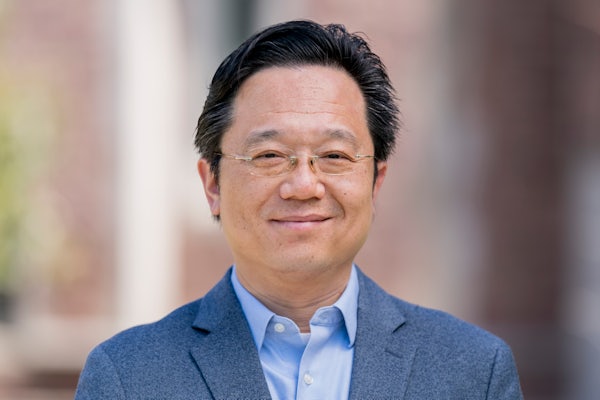Lu named Fullgraf Professor at Washington University in St. Louis
Chenyang Lu has been named the Fullgraf Professor at Washington University in St. Louis. He will be installed March 16

Lu is professor of computer science & engineering in the School of Engineering & Applied Science. He joined the faculty in 2002.
Lu's research interests include real-time systems, wireless sensor networks and cyber-physical systems, the Internet of Things and their applications in areas including health care, resilient civil infrastructure and smart homes. He also directs the Cyber-Physical Systems Laboratory (CPSL) at Washington University.
"Chenyang Lu's research has very important, widespread applications, from health care to other activities for monitoring real-time conditions, for example, in buildings and bridges," says Ralph S. Quatrano, PhD, dean and the Spencer T. Olin Professor. "We are very proud of Chenyang for his remarkable research and broad recognition of his contributions by both corporate and collegiate associates. We are extremely grateful to Charles Fullgraf for his generous gift of this professorship to support Chenyang."
Lu has made pioneering contributions to the field of wireless health by developing and piloting one of the world's first large-scale clinical monitoring systems that collects real-time vital signs from patients using wireless sensor networks. In collaboration with Washington University School of Medicine, Lu piloted the wireless monitoring system through a 14-month clinical trial of the system in six hospital wards of Barnes-Jewish Hospital in St. Louis. His work demonstrated the feasibility of reliable vital sign collection using a wireless sensor network integrated with hospital IT infrastructure. Lu is working toward the vision of wireless health where the convergence of wireless sensors, mobile computing, data mining and electronic medical records will lead to enhanced quality of care for patients in hospitals as well as for outpatients.
Lu has made important contributions to wireless structural monitoring and control systems relating to the growing problem of deteriorating civil infrastructure in the US and the world. Wireless sensor networks provide a compelling platform for long-term structural health monitoring due to their low installation cost in civil infrastructure. In collaboration with civil engineering researchers, Lu proposed a cyber-physical co-design approach to develop power-efficient structural health monitoring systems based on wireless sensor networks. More recently, he developed wireless systems to control structures, such as bridges, based on real-time measurements from wireless sensors attached to the structure so that they survive natural disasters.
Lu is also a leading researcher on real-time systems, an important class of computing systems with stringent real-time performance requirements such as those controlling automobiles and industrial automation. His contributions on real-time systems span adaptive real-time middleware, industrial wireless sensor-actuator networks and real-time virtualization technology that has been incorporated into mainstream system software used worldwide.
Lu is editor-in-chief of ACM Transactions on Sensor Networks. He also is area editor of IEEE Internet of Things Journal and associate editor of Real-Time Systems. He has also served as chair of top conferences in his field, including the IEEE Real-Time Systems Symposium, ACM/IEEE International Conference on Cyber-Physical Systems and ACM Conference on Embedded Networked Sensor Systems. Lu is the author and co-author of more 150 research papers.
Lu earned a doctorate from University of Virginia in 2001, a master's degree from Chinese Academy of Sciences in 1997, and a bachelor's degree from University of Science and Technology of China in 1995, all in computer science.
Charles M. Fullgraf, who earned a bachelor's degree in chemical engineering from Washington University in 1939, had a more than 40-year career with Procter & Gamble as an engineer, researcher, division manager, group vice president and director, corresponding with the company's growth from a soap manufacturer to a diversified, multinational corporation. He initially worked in munitions production during World War II. In the 1950s, he became involved in the dental research that produced the first fluoride toothpaste, Crest. In the 1960s, he moved from engineering into management, overseeing international operations before returning to the U.S. as director of Asian and Latin American operations. He became a vice president in 1966, was elected a director of the company in 1974, and retired as a group vice president in 1982.
Fullgraf was among the recipients of the School of Engineering & Applied Science's first Alumni Achievement Awards in 1975 and was given a university-wide Distinguished Alumni Award in 1981. He was vice chair of the Alumni Board of Governors from 1974-76, and served on the Commission of the Future of Washington University. He died in 2010.
Back to News


